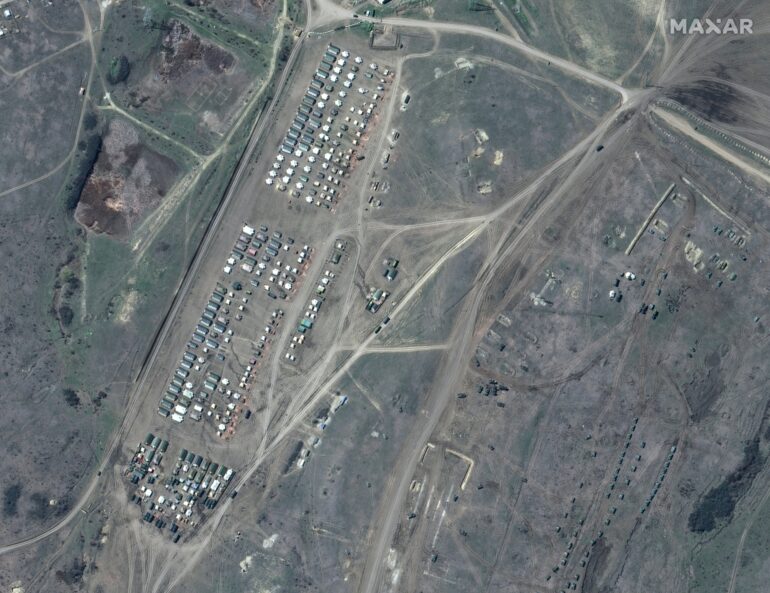The U.S. has been warning for weeks about the possibility of Russia invading Ukraine, and threatening retaliation if it does. Just eight years after Russia’s incursion into eastern Ukraine and invasion of Crimea, Russian forces are once again mobilizing along Ukraine’s borders.
As the U.S. and other NATO member governments monitor Russia’s activities and determine appropriate policy responses, the timely intelligence they rely on no longer comes solely from multimillion-dollar spy satellites and spies on the ground.
Social media, big data, smartphones and low-cost satellites have taken center stage, and scraping Twitter has become as important as anything else in the intelligence analyst toolkit. These technologies have also allowed news organizations and armchair sleuths to follow the action and contribute analysis.
Governments still carry out sensitive intelligence-gathering operations with the help of extensive resources like the U.S. intelligence budget. But massive amounts of valuable information are publicly available, and not all of it is collected by governments. Satellites and drones are much cheaper than they were even a decade ago, allowing private companies to operate them, and nearly everyone has a smartphone with advanced photo and video capabilities.
As an intelligence and information operations scholar, I study how technology is producing massive amounts of intelligence data and helping sift out the valuable information.
Open-source intelligence
Through information captured by commercial companies and individuals, the realities of Russia’s military posturing are accessible to anyone via internet search or news feed. Commercial imaging companies are posting up-to-the-minute, geographically precise images of Russia’s military forces. Several news agencies are regularly monitoring and reporting on the situation. TikTok users are posting video of Russian military equipment on rail cars allegedly on their way to augment forces already in position around Ukraine. And internet sleuths are tracking this flow of information.
Popular social media platforms like TikTok have become valuable sources of intelligence.
This democratization of intelligence collection in most cases is a boon for intelligence professionals. Government analysts are filling the need for intelligence assessments using information sourced from across the internet instead of primarily relying on classified systems or expensive sensors high in the sky or arrayed on the planet.
However, sifting through terabytes of publicly available data for relevant information is difficult. Knowing that much of the data could be intentionally manipulated to deceive complicates the task.
Enter the practice of open-source intelligence. The U.S. director of national intelligence defines Open-Source Intelligence, or OSINT, as the collection, evaluation and analysis of publicly available…
